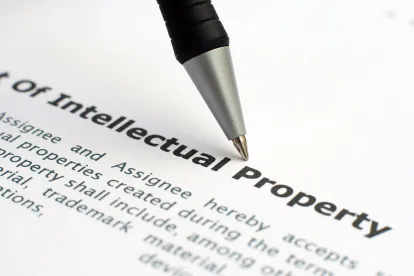December 1, 2020 will mark the five-year anniversary of the Supreme Court’s abrogation of Form 18—the model complaint that provided the minimum requirements for stating a claim of direct infringement. Following the abrogation of Form 18, patent infringement claims must satisfy the plausibility standard articulated in Bell Atlantic Corp. v. Twombly, 550 U.S. 544 (2007) and Ashcroft v. Iqbal, 556 U.S. 662 (2009). Courts, however, have diverged in applying Iqbal and Twombly to patent cases. As a result, pleading standards now vary from jurisdiction-to-jurisdiction (and even from judge-to-judge within the same jurisdiction).
In a series of blog posts, we will explore how courts are currently applying the Iqbal/Twombly pleading standards to patent cases. In this first installment, we look at Federal Circuit opinions issued since the abrogation of Form 18. These decisions arguably raise as many questions as they answer.
First, a quick refresher on Form 18 and Iqbal/Twombly may be helpful.
Form 18
For more than seventy years, Form 18 (formerly Form 16) set the minimum requirements for stating a claim of direct patent infringement. Form 18 was a model of threadbare pleading. It required a plaintiff to provide boilerplate allegations concerning jurisdiction, ownership of a valid patent, and compliance with patent marking/notice requirements. Form 18 also required a conclusory, one-sentence allegation of infringement:
“The defendant has infringed and is still infringing the [patent-in-suit] by making, selling, and using [accused products] that embody the patented invention, and the defendant will continue to do so unless enjoined by this court.”
Twombly and Iqbal
In Twombly and Iqbal, the Supreme Court held that a complaint must include factual allegations that, if accepted as true, state a claim to relief that is plausible on its face. Iqbal, 556 U.S. at 678. The factual allegations must allow a court to draw a reasonable inference that the defendant is liable for the misconduct alleged. Id. Under this standard, it is not enough to allege facts that are merely consistent with a defendant’s liability. Id. Also, “labels and conclusions, and a formulaic recitation of the elements of a cause of action” are insufficient. Twombly, 550 U.S. at 555.
Disputes over Applying Iqbal/Twombly to Patent Cases
As Judge Dyk recognized in his concurrence in McZeal v. Sprint Nextel Corp., 501 F.3d 1354, 1360 (Fed. Cir. 2007), the conclusory allegation of infringement found in Form 18 was likely inconsistent with the plausibility standard set forth in Iqbal and Twombly. See also Peralta v. Cal. Franchise Tax Board, 673 Fed. App’x 975, 980 n.2 (Fed. Cir. 2016) (recognizing that Form 18 set a “lower standard” than Twombly).
Following the abrogation of Form 18, district courts have faithfully cited Iqbal and Twombly in patent cases and recognized that conclusory allegations of infringement are no longer sufficient. But courts have disagreed over what qualifies as a “conclusory” allegation of infringement.
At the heart of the dispute is whether element-by-element factual allegations are required under Iqbal/Twombly. Defendants have argued that a claim of direct infringement is only plausible if a complaint contains facts that, if true, would show that an accused product or process practices each and every limitation of at least one patent claim. Plaintiffs, by contrast, have argued that they are not required to “prove” infringement at the pleading stage and, as such, element-by-element factual allegations are not required.
Federal Circuit Decisions
The Federal Circuit has issued only a few opinions on pleading standards in the five years following the abrogation of Form 18. Taken together, these decisions provide scant and inconsistent guidance on how district courts should apply Iqbal/Twombly to patent cases.
1) Are element-by-element factual allegations required under Iqbal/Twombly?
The Federal Circuit has issued three opinions since the abrogation of Form 18 that touch on the need for element-by-element factual allegations.
First, in Nalco Co. v. Chem-Mod, LLC, 883 F.3d 1337 (Fed. Cir. 2018), the Federal Circuit expressly stated: “‘the Federal Rules of Civil Procedure do not require a plaintiff to plead facts establishing that each element of an asserted claim is met.’” Id. at 1350 (quoting In re Bill of Lading, 681 F.3d 1323, 1339 (Fed. Cir. 2012) (emphasis added).
On its face, Nalco appears to hold that element-by-element allegations are unnecessary. But closer examination indicates that parties should exercise caution in relying on Nalco for such a proposition. First, Nalco’s statement on element-by-element allegations is likely dicta given that there was no challenge to the sufficiency (or necessity) of element-by-element pleadings in Nalco. Id. at 1347. Second, the statement in Nalco is actually a partial quote from the decision in Bill of Lading—a case that addressed pleading requirements under Form 18, not under Iqbal/Twombly. See, e.g., Bill of Lading, 681 F.3d at 1335 n.7 (“While there may be criticism of the text of Form 18, it is not within our power to rewrite it.”).
Second, a few months after Nalco, the Federal Circuit issued a decision in Disc Disease Solutions, Inc. v. VGH Solutions, Inc., 888 F.3d 1256 (Fed. Cir. 2018) finding a conclusory allegation of infringement to be sufficient under Iqbal/Twombly. The complaint in Disc Disease identified three products accused of infringement. Id. at 1260. But the complaint did not identify the asserted patent claims and contained no factual allegations addressing claim elements. Instead, the plaintiff alleged in conclusory fashion that the accused products practiced “each and every element of at least one claim.” Id. The Federal Circuit held that the allegations in Disc Disease were “enough to provide [defendant] fair notice” because the case “involve[d] a simple technology” and the plaintiff attached copies of the asserted patents and “photos of the product packaging.” Id.
Plaintiffs have cited Disc Disease for the proposition that element-by-element allegations are not required when a plaintiff identifies the product(s) accused of infringement by name or by photograph of the product packaging. Defendants, by contrast, have argued that Disc Disease only applies to cases involving “simple” technology where a court can reasonably infer infringement based on photos alone. Defendants contend that element-by-element allegations are still necessary in all other cases.
Third, the Federal Circuit issued its decision last month in Golden v. Apple Inc., No. 2020-1508 (Fed. Cir. Sep. 3, 2020), finding that the plaintiff failed to state a claim for patent infringement despite identifying the asserted claims and accused products and attaching claim charts. The Federal Circuit explained that “conclusory formulaic recitations of the elements of patent infringement” are not sufficient and the claim charts were also inadequate because they “disingenuously us[ed] the words of the claims to generally describe cryptically identified structures.”
Thus, in contrast to Disc Disease, the decision in Golden indicates that identifying the accused products is not alone sufficient to state a claim for infringement. Further, Golden indicates that even element-by-element allegations are insufficient if they are too cryptic and merely parrot the language of the asserted claims.
In sum, the Federal Circuit’s decisions in Nalco, Disc Disease, and Golden fail to provide consistent and definitive rules on whether element-by-element factual allegations are required under the pleading standards of Iqbal and Twombly.
2) Can a district court address claim construction in resolving a motion to dismiss?
The Federal Circuit has also sent mixed messages on whether Iqbal and Twombly allow district courts to consider the plausibility of disputed claim constructions.
In Nalco, the Federal Circuit held that it was improper for the district court to consider claim construction issues in assessing the plausibility of infringement allegations. The patent at issue in Nalco (U.S. Patent No. 6,808,692) was directed to a method of controlling mercury emissions from coal-fired power plants. Id. at 1342. The asserted claims required the step of “injecting a bromide compound . . . into . . . flue gas.” Id. (emphasis added). The plaintiff alleged in the complaint that the defendant’s process injected a bromide compound into a combustion furnace. The district court dismissed the complaint, finding that the alleged location of the injection (i.e., in the combustion furnace rather than in the flue gas) could not satisfy the injecting limitation. The Federal Circuit reversed, finding that the district court’s decision relied on “classic Markman arguments” about the meaning of “injecting” and “flue gas,” which are “not suitable for resolution on a motion to dismiss.” Id.
In contrast to Nalco, the Federal Circuit held in Ottah v. Fiat Chrysler, 884 F.3d 1135 (Fed. Cir. 2018) that it was proper to dismiss claims of infringement based on a disputed claim construction: “The district court correctly found that the ‘book holder’ [of the claims] cannot plausibly be construed to include or be the equivalent of a camera holder, in view of the specification and the prosecution history.” Id. at 1141-42. Ottah thus indicates that claim construction issues may be suitable for resolution on a motion to dismiss, at least in certain circumstances.
3) What level of specificity is required to allege acts of infringement?
The Federal Circuit has also issued decisions that are nearly diametrically opposed concerning the level of detail required to plausibly allege infringement.
In Lifetime Indus., Inc. v. Trim-Lok, Inc., 869 F.3d 1372 (Fed. Cir. 2017), the court held that a complaint was sufficient under Iqbal /Twombly because it identified “where the alleged infringement occurred (the Forest River plant); when it occurred (in or around June 2013); who performed the allegedly infringing act (an agent or employee of Trim-Lok); and why (to test fit the seal onto the RV and to solicit sales).” Id. at 1379. Additional details, such as the identity of the “agent” that committed the infringing act, were unnecessary because “[t]here is no requirement for [a Plaintiff] to ‘prove its case at the pleading stage.” Id.
In contrast to Lifetime, the Federal Circuit found that the allegations in Artrip v. Ball Corp., 735 F. App’x 708 (Fed. Cir. 2018) were insufficient under Iqbal and Twombly. In Artrip, the plaintiff alleged that the defendant infringed by using “machines” located at the “Bristol Plant” for “forming and attaching lift-tabs to can ends.” Id. at 714. The Federal Circuit nonetheless found the plaintiff failed to state a claim because the complaint “does not sufficiently identify, for example, by photograph or name, any of the particular machines that allegedly infringe other than by broad functional language.” Id. at 715.
The dissonance between the decisions in Lifetime and Artrip is plain: in Lifetime, alleging that an agent of the defendant tested a “two-part seal” at the “Forest River plant” in or around “June 2013” was adequate; in Artrip, alleging that defendants continuously used patented “machines” for “forming and attaching lift-tabs to can ends” at the “Bristol Plant” was inadequate.
Key Takeaways
-
Following the abrogation of Form 18 on December 1, 2015, claims of patent infringement are governed by the plausibility pleading requirements of Iqbal and Twombly.
-
After nearly five years, the Federal Circuit has provided scant and inconsistent guidance on how Iqbal and Twombly should apply to patent cases.
-
For example, the Federal Circuit has not set definitive rules on whether element-by-element allegations are required—i.e., whether a complaint must allege facts that, if true, would allow a court to reasonably infer that the defendant practices each and every limitation of an asserted claim.
-
As we will address in future posts, the dearth and inconsistency of Federal Circuit guidance has resulted in district courts applying pleading standards that vary from jurisdiction-to-jurisdiction.



 />i
/>i
